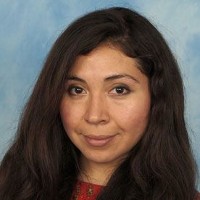Early identification of the human drivers affecting the groundwater system in Yucatan, Mexico
Introduction
Groundwater is the predominant accessible reservoir of freshwater on Earth. Successful groundwater resource management relies on models that effectively capture interconnections between groundwater and society. In Yucatan, Mexico, the effects of a meteor impact 65 million years ago dominate the geomorphology, forming a complex groundwater system that is the only source of freshwater for the population. In this region, water demands are growing, and inhabitants have to deal with water shortages. Novel experimental and modeling approaches are needed to understand how groundwater common pool resources, as complex systems, interact with the social system. Substance flow analysis (SFA) is an analytical method that allows assessment of the flows and impacts of chemical substances within the environment. It has been used to investigate hazardous materials for environmental risk assessment in water bodies, and it has become a useful tool for resource management, especially in developing countries where there is poor availability of reliable data.
Methods
The objectives were: i) to develop a water balance of the geohydrological zone in Yucatan by quantifying groundwater flows associated with present-day economic sectors (industry, agriculture, livestock, and household consumption); ii) to construct an SFA to map flows throughout the relevant processes of the system (extraction, uses, treatment, final disposal, and recycling), including quantification of inputs and outputs; and iii) to identify key points at which the substances appear to be lost or to accumulate. As effective SFA is able to determine the pathways through which pollutants are generated and emitted, an SFA was constructed using applied systems analysis. I adapted the SFA framework, bringing together local and scientific knowledge. Combining this with mass balance and based on current data and estimation, I accounted for the flows. I depicted water Sankey flows within each sector using STAN. Directed outputs to the aquifer show how human activities influence the aquifer.
Results and conclusions
Results show that the total input, movement, and transformation of water fluxes by society cannot compensate for the final disposal of wastewater. SFA can be developed despite the lack of reliable data. As our results do not only depend on existing literature, as we found results through stakeholder workshops, statistical data, and expert opinion. The method will serve as a basis for long-term groundwater strategic planning and can be applied in regions with similar characteristics.
Supervisor
Brian Fath, Advanced Systems Analysis Program, IIASA
Note
Yolanda Lopez of the Maldonado Ludwig-Maximilians Universität, Germany, is a citizen of Mexico. She was funded by the IIASA German National Member Organization and worked in the Advanced Systems Analysis Program during the YSSP.
Please note these Proceedings have received limited or no review from supervisors and IIASA program directors, and the views and results expressed therein do not necessarily represent IIASA, its National Member Organizations, or other organizations supporting the work.
Further information


